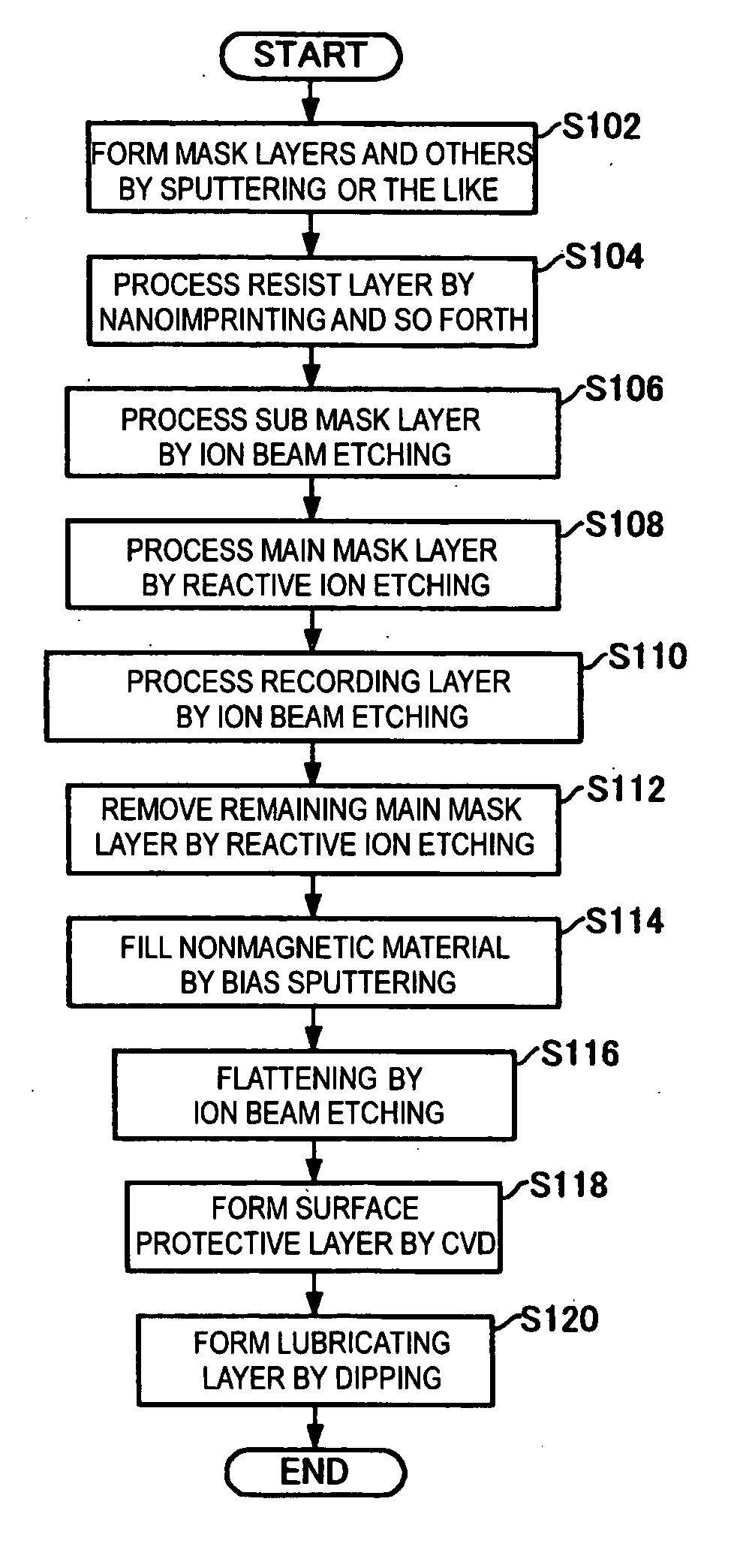Method of dry etching, method of manufacturing magnetic recording medium, and magnetic recording medium
a technology of dry etching which is applied in the field of dry etching, magnetic recording medium manufacturing, and magnetic recording medium, can solve the problems of limited etching progress, limit the advancement of etching, and limit the enhancement of the areal density with conventional improvement techniques, etc., and achieve favorable magnetic characteristics and high precision
- Summary
- Abstract
- Description
- Claims
- Application Information
AI Technical Summary
Benefits of technology
Problems solved by technology
Method used
Image
Examples
working example
[0097] In accordance with the foregoing exemplary embodiment, a continuous recording layer 52 of a CoCr alloy was deposited to a thickness of approximately 20 nm.
[0098] Moreover, an intermediate layer 22 of Si, a main mask layer 54 of C, and a sub mask layer 56 of Ni were deposited over the continuous recording layer 52 to thicknesses of approximately 2 nm, 15 nm, and 3 nm, respectively, by sputtering. A resist layer 58 made of an electron beam resist was deposited on the sub mask layer 56 to a thickness of approximately 20 nm by spin coating.
[0099] Next, by nanoimprinting and reactive ion etching using oxygen as the reactive gas, the resist layer 58 was processed into a concavo-convex pattern in which lines (convex portions) and spaces (concave portions) are laid at pitch of approximately 200 nm with a line-to-space ratio of approximately 1:1. Parts of the sub mask layer 56 under the bottoms of the concave portions of this concavo-convex pattern were removed by ion beam etching u...
PUM
 Login to View More
Login to View More Abstract
Description
Claims
Application Information
 Login to View More
Login to View More - R&D
- Intellectual Property
- Life Sciences
- Materials
- Tech Scout
- Unparalleled Data Quality
- Higher Quality Content
- 60% Fewer Hallucinations
Browse by: Latest US Patents, China's latest patents, Technical Efficacy Thesaurus, Application Domain, Technology Topic, Popular Technical Reports.
© 2025 PatSnap. All rights reserved.Legal|Privacy policy|Modern Slavery Act Transparency Statement|Sitemap|About US| Contact US: help@patsnap.com



